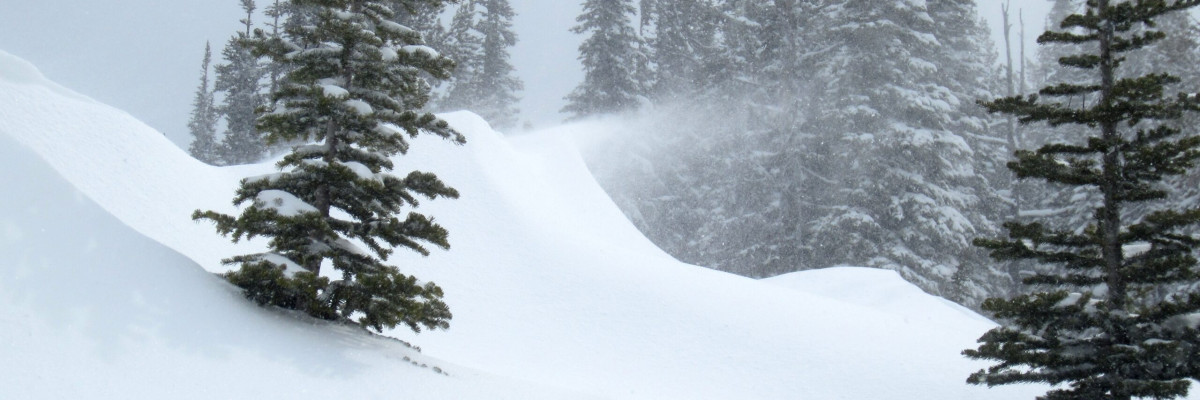The avalanche danger in the west central Montana backcountry is rated at moderate. It is possible to trigger loose snow and wind slab avalanches. There is also the probability, albeit low, of triggering a deep slab avalanche on very steep slopes (>35 degrees).
Good morning, this Dudley Improta with the West Central Montana Avalanche Center’s advisory for March 3, 2015. This danger rating does not apply to operating ski areas, is the sole responsibility of the U.S. Forest Service and expires at midnight tonight (2/3/15).
Weather and Snowpack
The winter storm warning from yesterday has been cancelled; west central Montana is now under a winter weather advisory until 11 A.M. The northern part of the advisory area picked up 4 to 5 inches of snow, the central Bitterroot got up to 6 inches. Some snow banding (periods of intense snow in certain areas) did occur; the Ch-paa-qn (Sleeping Woman) snotel is showing 8 inches from last night. The winds howled in the mountains and are still gusting in the 30 mph range this morning; mainly out of the east. Mountain temperatures are below 0 F.
The winds with last night’s storm began out of the south and west and eventually became easterly. The snow we picked up last night is cold and light. Wind slabs are a possibility on just about any aspect. The old surface of the snow was generally stiff; so the new light snow will sluff easily on slopes steeper than 35 degrees.
Like I mentioned above, some banding did occur with this storm. There will be areas in west central Montana that received more than 6 inches. The slopes in these areas will be capable of producing larger wind slabs and loose snow sluffs.
We are still keeping an eye on a deeper slab that has been propagating in our extended column tests for a month. I re-posted our video below from February 26 that shows this failure. We got the same layer to propagate with energy near Lost Trail (pit profile below) and in the Rattlesnakes on Sunday. The persistence and “on again/off again” character of this layer has us scratching our heads. I would dig down a little deeper than a meter (3 feet) to look for it if I were considering any steep slopes with shaded northerly aspects.
Weather and Avalanche Conditions Outlook
The weather service is forecasting dry conditions with a gradual rise in temperatures beginning tomorrow. This pattern is likely through the coming weekend. I would expect the avalanche danger to remain the same at least through Wednesday. My main concern is the wind and the cold, loose snow available for transport. The avalanche danger should decrease toward the end of the week with the weather predicted.
If you would like to send snow observations use our public observations form or send us an e-mail at info@missoulaavalanche.org .
I will post the next regularly scheduled advisory on Friday, March 6.
Ride and ski safe and have a great week.



















